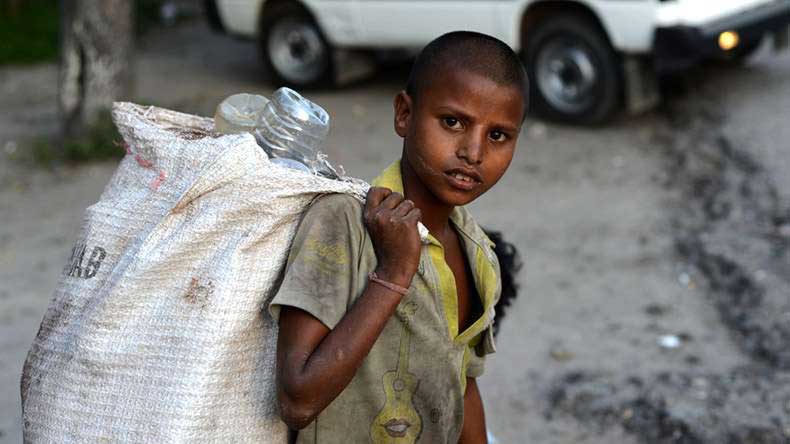The apathy of state governments towards protecting children in difficult conditions leads to the death of 3,000 children everyday due to malnutrition, according to a consolidated report on the situation of vulnerable children from India, released by Plan India, an independent child development organisation.
About 23 million children in India are malnourished, 18 million children are living and working on the urban streets in India, while 4.3 million children are employed as child labourers and 40% of the 3 million sex workers are minors in India, according to the report.
“Children in difficult circumstances” are those who are living on the streets and working, those affected by HIV/AIDS, victims of commercial sexual exploitation and trafficking, children of female sex workers and child labourers.
Among the states, 80% have reported street and working children as a major concern in their states, while 75% states reported missing and trafficked children as a third major concern. Child marriage has also been a major concern for states in the North, south and Western regions.
Preeti Sudan, Special Secretary, Ministry of Women and Child Development, said, “In all, 39% of the total population in India consists of children and 29% of them are between the age of 0-5 years. However, two million of them do not live beyond the age of five years. These figures are very sad. We have a strong and robust legal framework to protect our children, but the real problem is implementing these laws effectively through the state mechanisms and a lot needs to be done at the state level.”
“We also have several schemes like the Integrated Child Protection scheme and the ICDS (Integrated Child Development Scheme) that has a package of services within it for the development of a child, like the Aganwaadis in the rural sector. We also have a child helpline number, which is working effectively. But we need to do a lot more to put the last child first in the system,” she further added.
In Rajasthan, 57.6% of women are married off before they reach the age of 18 years followed by Uttar Pradesh at 54.9% and Madhya Pradesh at 30%. The issue of child marriage is also rampant in the eastern region of the country, with Bihar and Jharkhand topping the list with 69% and 63.2% respectively, while West Bengal and Chhattisgarh also seen a significant number of child marriages, according to the Plan India report.
Delhi, Rajasthan and Uttar Pradesh have the highest number of trafficking cases. These states are also destination and transit points for child trafficking cases. The report also stated that every second child that has been trafficked was being subjected to one or more forms of sexual violence, whereas 2.8 million people are trafficked for commercial sexual exploitation. Madhya Pradesh accounted for the highest rate of crime against children with 16.9%, whereas the Eastern region remained the hub and source of child trafficking cases. The National Crime Records Bureau (2014) data shows 61% of the total human trafficking crime cases in India was carried out from the Eastern region of the country and 48% of the total children who went missing remained untraced. Goa is also seen to be the most “favourable point” for selling off minors into the flesh trade.
A total of 4.3 million children in India work as child labourers and among all the states, Uttar Pradesh ranks the highest with 1.8 million children between the age group of 5-14 years employed as child labourers in vulnerable sectors, while 82,28,481 children are engaged as labourers in Maharashtra, which accounts for 11.4% of the total child labour in the country, followed by Madhya Pradesh at 6.6%.
The census data of 2011 also revealed that child labour in Bihar had increased from 8.8% in 2001 to 10% in 2011.
Most of the children who are engaged as labourers in vulnerable conditions were because of abject poverty, rapid urbanisations and migration of the rural population into the urban areas and also due to the lack of conviction of the offenders in child labour cases in the courts.
According to the report, children in the North Eastern region are the biggest victims of drug abuse and HIV/AIDS. Children of tender ages are prone to drugs like heroine, cannabis, charas, ganja and bhang, among others, with a high instance of inhalants and injection used drugs. In Nagaland, the use of injection prevalent drug abuse has led to 20% of the children population prone to HIV/AIDS.

